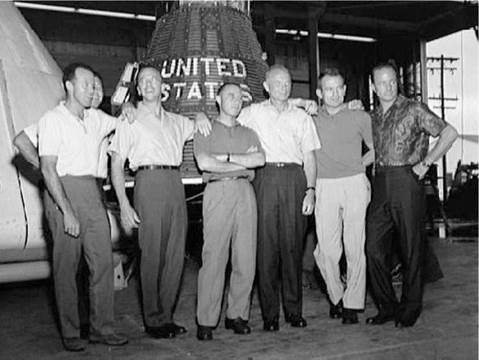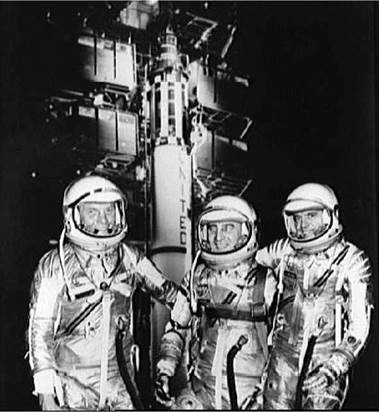1961-1970: THE PIONEERING YEARS
In an era of strained East/West relations following WWII, the growth in communism and the fear of a new, potentially nuclear, global conflict helped to create what has been termed the “Cold War”. Amid these fears of annihilation emerged a dramatic increase in the military arsenals of both the United States and the Soviet Union, creating the “Arms Race”. For military planners, gaining the high ground meant mastering a strategic advantage over the enemy. Attaining space flight capability in orbit around the Earth, or perhaps as far as the Moon, was about as high as you could hope to get in the 1950s. Of course, the only countries capable of achieving such a feat in the late 1950s were the communist Soviet Union and the capitalist United States. The “Space Race” which evolved between these two powerful nations and their ideologies was a competition to place the first object (satellite) in Earth orbit, send payloads to the Moon, and put the first man in space. The overriding goal during the first years of human space exploration was not scientific in purpose, but simply to beat the other superpower to the line. Doing so would be a clear demonstration, it was thought, of superior technology, implying strong military capability and making a great political and ideological statement.
It soon became obvious that enormous financial investment and infrastructure would be required to develop, mount, and sustain manned space flight operations. Military involvement was critical in the early years, if not in operational activities, then certainly to support launch, tracking, or recovery, or to provide the hardware and infrastructure to launch the payloads. As the program developed, so the balance between military and civilian participation shifted accordingly, with the support of the scientific community varying as required. For the Soviets, the complicated structure of the design bureaus and the supersecret nature of the civilian and military programs frequently served only to delay the development of advanced programs, such as the manned lunar landing, space shuttle, or space station efforts.
In contrast, the creation of the U. S. government space agency NASA (National Aeronautics and Space Administration) in 1958 helped focus the “civilian” U. S. space program, but it did create the potential for competition and confrontation with the U. S. military—primarily the USAF. This friction was to
|
The original seven Mercury astronauts (left to right): Cooper, Schirra, Shepard, Grissom, Glenn, Slayton and Carpenter. |
surface in congressional support for the development of the USAF Manned Orbiting Laboratory and NASA’s Apollo AppUcations (Skylab) space station programs and, much later, in convincing the Pentagon of the value of the NASA Space Shuttle for Department of Defense needs.
When President Kennedy committed America to reach the Moon by 1970, ideally before the Soviets, the Arms Race that had become the Space Race now evolved into a Moon Race. Even though it turned out to be purely one sided, at the time this was not clear, even to the Americans. When the U. S. committed to the Moon, only Yuri Gagarin had orbited the Earth, and then only once, during a 108-minute mission. America’s own space explorer, Alan Shepard, had experienced space but had not entered orbit, completing a 15-minute suborbital space “hop”. A second such flight was completed by Virgil Grissom in July 1961, but in August this was overshadowed by a mammoth 24-hour flight by Soviet cosmonaut Gherman Titov in Vostok 2. The bold commitment to place Americans on the Moon came as a surprise even to those involved in determining whether it could actually be done, so there was much work ahead. The clock was ticking and the Americans were clearly well behind in the race… for now.
|
Three for space, but which one? (left to right): Glenn, Grissom, and Shepard. |












